Economic Premises of Mecca and Medina During the Prophet Muhammad ﷺ Era: A Comparative Study of Trade and Agriculture
The Arabian Peninsula during the Prophet Muhammad’s ﷺ time was a region shaped by two major economic systems, deeply tied to the environmental conditions and strategic locations of the cities of Mecca and Medina. Mecca, known for its bustling trade routes, became a commercial hub, while Medina (Yathrib), with its fertile lands, relied heavily on agriculture. The distinction between the two cities’ economies also shaped their cultural and social structures, leading to a unique synergy after the migration (Hijrah) of the Prophet Muhammad from Mecca to Medina. This article will explore these economic premises, focusing on economic dependence, cultural interactions, and a historical comparison between Mecca’s trading-based economy and Medina’s agricultural foundation, enriched with the involvement of notable companions (Sahaba) and the Ansar.
Economic Premises of Mecca
- Trade-Centric Economy
Mecca's economy was heavily dependent on trade, with its prime location along the caravan routes that connected Yemen to the Levant. The Quraysh tribe, which controlled Mecca, played a central role in this trading network. Meccan merchants, like the Prophet’s ﷺ wife Khadijah bint Khuwaylid, managed large trading caravans and dealt in commodities such as spices, silk, and other luxury goods. The Prophet Muhammad ﷺ himself, before receiving his prophetic mission, was a trader working for Khadijah, gaining experience in the region’s commercial systems【Ibrahim, 1987】.
Notable Sahaba like Abu Bakr al-Siddiq were also deeply involved in Meccan trade. Abu Bakr was a wealthy merchant who utilised his business profits to aid the Muslim community. His financial support was critical in freeing slaves like Bilal ibn Rabah, whose freedom represented not only a humanitarian act but also a form of economic liberation from the Meccan elite【Donner, 2010】.
- Cultural and Economic Influence
Mecca's economy was also tied to its religious importance. The Kaaba, even before the advent of Islam, was a religious and commercial centre that attracted pilgrims from across Arabia. This annual pilgrimage (the pre-Islamic version of Hajj) brought significant economic activity to the city. The Quraysh’s economic power was further strengthened by their role as custodians of the Kaaba. This trade-driven economy created a cosmopolitan culture where Meccans were exposed to different cultures, languages, and religions.【Ibrahim, 1987】.
Economic Premises of Medina
- Agriculture-Based Economy
In contrast, Medina's economy was rooted in agriculture. The fertile soil and numerous oases made it suitable for the cultivation of crops, particularly date palms. This agricultural wealth allowed the residents, particularly the Ansar (the local tribes of Aws and Khazraj), to lead a relatively stable economic life.
After the Prophet Muhammad ﷺ migrated to Medina in 622 CE, the city became the center of the growing Muslim community. One of the earliest economic alliances was the "Muwakhat" (brotherhood) between the Muhajirun (emigrants from Mecca) and the Ansar. Notable figures such as Sa’d ibn al-Rabi’ from the Ansar exemplified this bond. He offered his wealth and properties to his Muhajir brother, Abd al-Rahman ibn Awf, a trader by profession, who graciously declined the gift but asked for guidance to the market, demonstrating the importance of trade in integrating the two communities【Donner, 2010】.
- Localized Trade and Craftsmanship
While Medina’s primary economy was based on agriculture, trade still played an essential role, particularly among the Jewish tribes such as the Banu Qaynuqa and Banu Nadir, who were engaged in craftsmanship and trade. They were skilled in various crafts, including metalworking, which added another layer to the city's economy. The Prophet Muhammad ﷺ ensured that after his arrival, trade relations between the various communities were fair and that the Ansar and the Muhajirun worked together harmoniously【Watson, 1983】.
Economic Dependency and Comparative Analysis
- Mecca’s Dependence on Trade
The barren environment of Mecca meant that agriculture was not feasible, forcing the Quraysh to rely entirely on trade for their economic survival. The Prophet’s ﷺ own experiences as a merchant helped him understand the significance of trade routes. Mecca’s wealth was thus tied to the safety and security of these routes. Historical incidents like the caravan raids by the Muslims in the early days of the conflict between the Meccans and the Medinans, such as the Nakhla raid led by Abdullah ibn Jahsh, show how critical these trade routes were【Ibrahim, 1987】. These raids were not only military actions but also economic strategies to weaken the Quraysh’s control over regional commerce.
- Medina’s Agricultural Dependence
Medina’s economy was much more self-sustaining, relying heavily on its agricultural output, especially dates. One historical example is the Battle of the Trench (627 CE), where the Prophet and the Muslim community, while preparing for the siege, worked on their agricultural lands to ensure they had sufficient food supplies. The Ansar’s support in this regard, particularly from figures like Salman al-Farsi, who suggested the digging of the trench around Medina, demonstrates the practical combination of agricultural stability and military strategy【Watson, 1983】.
Cultural Articulation and Economic Influence
- Mecca’s Cosmopolitan Culture
As a trading hub, Mecca had extensive cultural interactions with neighbouring regions such as Byzantium, Persia, and Abyssinia. The wealth generated from trade allowed the Meccan elite to live luxuriously, creating a cultural divide between the rich merchants of Quraysh and the poorer residents. This cultural and economic disparity contributed to the early tensions between the Quraysh elite and the Prophet Muhammad ﷺ , who preached economic fairness and the redistribution of wealth【Donner, 2010】.
- Medina’s Agricultural Culture and Unity
Medina’s agricultural base fostered a sense of unity and cooperation as people worked together to maintain the farmlands and oases. The Prophet’s ﷺ establishment of the Sahifah (Constitution of Medina) united the various tribes, including the Jewish tribes, under a common legal framework, which was essential for maintaining peace and economic stability. The constitution also ensured that the agricultural wealth of Medina was shared among all the people, further strengthening the bonds between the Muhajirun and the Ansar【Watson, 1983】.
Historical Comparison: Mecca vs. Medina
- Economic and Political Stability
Mecca’s political power was directly tied to its economic dominance. The Quraysh’s wealth and control of the Kaaba gave them immense influence over the region’s political affairs. The Prophet Muhammad’s ﷺ struggle with the Meccans was as much about economic control as it was against religious prosecution against Muslims. On the other hand, Medina’s political power before the Prophet’s arrival was fragmented, but its agricultural wealth provided a stable base for the growing Muslim state. The Ansar’s economic cooperation with the Muhajirun helped stabilise the early Muslim community【Donner, 2010】
- Religious and Economic Shifts
After the Hijrah, Medina became the political and religious center of the Muslim world. The Prophet’s ﷺ successful integration of Mecca’s trading elite and Medina’s agricultural base set the foundation for the future expansion of the Islamic empire. The Treaty of Hudaybiyyah (628 CE), which allowed Muslims to return peacefully to Mecca for pilgrimage, was not just a religious victory but also restored trade routes between Mecca and Medina【Ibrahim, 1987】.
Conclusion
The economic structures of Mecca and Medina during the Prophet Muhammad’s ﷺ era reveal the significance of trade and agriculture in shaping their respective cultures and political dynamics. While Mecca thrived on trade and cosmopolitan interactions, Medina’s self-sustaining agricultural economy fostered cooperation and unity. The Prophet’s ﷺ ability to harmonise these two different economies under a single religious and political system laid the foundation for the Islamic world’s future prosperity. Through the participation of key Sahaba and Ansar, such as Abu Bakr, Sa’d ibn al-Rabi’, and Abd al-Rahman ibn Awf, the Muslim community was able to flourish in both trade and agriculture, ensuring its long-term survival.
About the author:
Mohammed Shebeen T. Shabu is an accomplished academic with a Master’s degree in International Finance (M.Com), having qualified for the NET-JRF. He is currently pursuing a Ph.D. in Commerce at the University of Madras.
References:
- Ibrahim, Mahmood. Social and Economic Conditions of Pre-Islamic Mecca. Islamic Studies Journal, 1987.
- Watson, Andrew M. Agriculture in the Early Islamic Empire: Factors Influencing the Development of Farming in Arabia. University of Chicago Press, 1983.
- Donner, Fred M. Muhammad and the Believers: At the Origins of Islam. Harvard University Press, 2010.
Disclaimer
The views expressed in this article are the author’s own and do not necessarily mirror Islamonweb’s editorial stance.

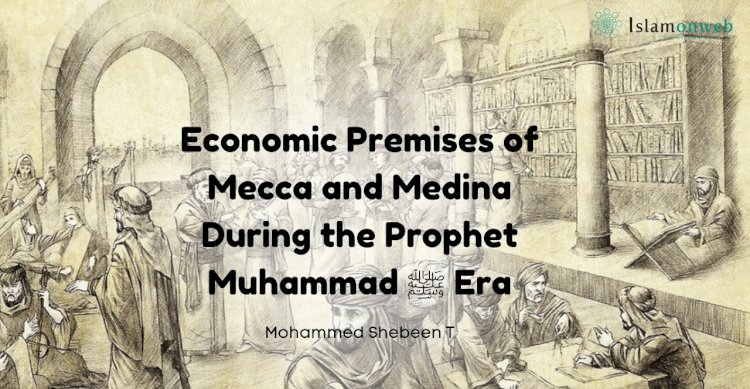


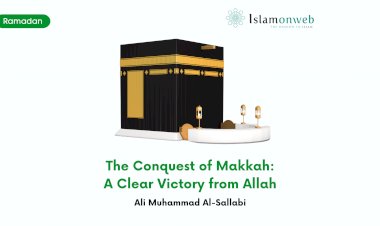
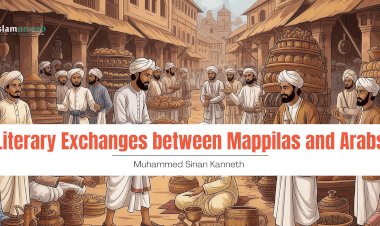


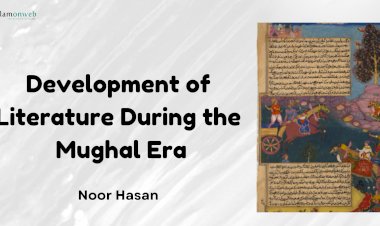
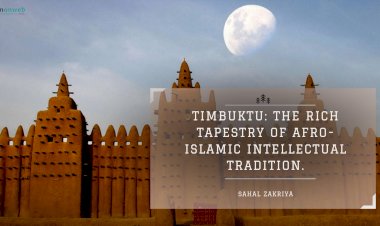














Leave A Comment